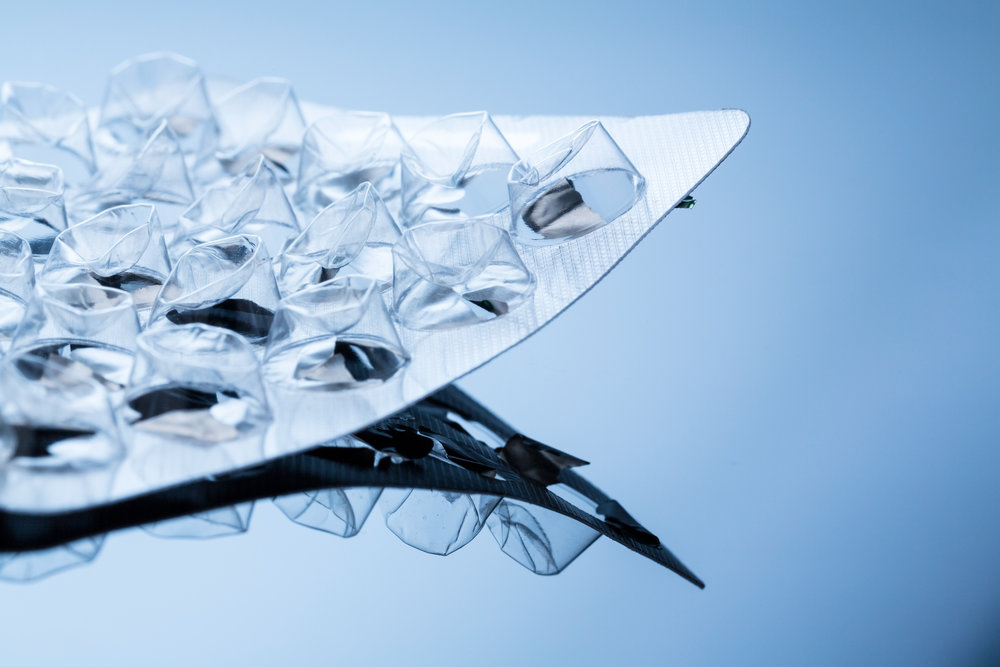Systems used to package therapeutics products – often called “Packaging Systems”, are generally constructed and composed from materials that may include glass, metals, plastics and elastomers/homologous polymers with a range of molecular weights and several additives.
These systems are usually in contact with the pharmaceutical product at some point during manufacturing, storage or administration and cause a big concern for safety.

Standards that address the safety and efficacy impact of interactions between the packaging systems and pharmaceutical products must consider diverse materials of construction and should include relevant and appropriate test methods and specifications for these materials.
The preexisting USP 38/NF 33 Chapter 661 contained analysis and qualifying methods for plastic packaging materials which included identification tests and physiochemical tests, but did not fully address the safety and efficacy of the material for its intended use. 1
Starting May 1, 2016, the new USP 39/NF 34 chapter 661.1 and 661.2 series characterize the materials better to provide more meaningful and rigorous analysis of the polymers that compose packaging materials <USP 661.1> and packaging systems <USP 661.2>.
What are the new USP <661> chapters and what concerns do they address?
There are two separate chapters which were added to the May 2016 revision of USP <661>:
<661.1> Plastic Materials of Construction, determines whether a material has been well-characterized, for its intended use, and is designed to ensure that the material characteristics match the relevant performance requirements.
This chapter solely applies to individual plastic and raw materials, and contains tests, methods and specifications for cyclic olefins, polyethylene, polypropylene, polyethylene terephthalate, polyethylene terephthalate G, and plasticized polyvinyl chloride.
<661.2> Plastic Packaging Systems for Pharmaceutical Use, provides test methods and standards for plastic packaging systems.
The term “plastic packaging system” refers to the sum of packaging components which together contain the pharmaceutical product, the sum of which may include:
1. Primary packaging components: Those that directly contact the product at some time during the product’s manufacturing, distribution storage or use.
2.Secondary packaging components: Those that may interact with the pharmaceutical product’s manufacturing, distribution storage or use, although the component does not directly contact the pharmaceutical product.
What do these USP <661> changes mean for packaging systems already in use and are commercially available?
The purpose of <661.1> is to increase the likelihood that a packaging system will be suitable for use by providing data about its material(s) of construction; whereas the purpose of <661.2> is to establish that the packaging system is suitable for use.
The new changes will only affect packaging systems which have not yet gained regulatory approval for use with a to-be marketed pharmaceutical product. If the packaging system is currently being used with a pharmaceutical product that is currently on the market, it does not require testing to the new requirements.
However in case of modifications, if a new material has been introduced, or if a material has changed then the packaging system will have to be re-tested. If the packaging system is changed in a way that does not alter its materials, then it does not need testing.
What tests would be performed to identify the material characteristics as required in <661.1> and <661.2>?
The testing matrix would primarily depend on the composition of the packaging system.
For <661.1> it may include any of the following tests (or a combination of them):
The characterization is done by identity, biocompatibility (biological reactivity), General physicochemical properties and additives and extractable metals.
- Biological reactivity
- IR
- Thermal analysis
- Extraction (possible solvents: water, toluene, alcohol)
- Acidity or alkalinity
- Absorbance
- TOC
- Metals (ICP- MS), HPLC (as required for the additive composition)
For <661.2> the focus is on suitability for use with respect to patient safety, and therefore the testing regimen would be inclusive of the establishment of the packaging system’s :
- Biocompatibility (biological reactivity)
- Physiochemical properties (water extraction, acidity or alkalinity, absorbency, TOC)
- Chemical safety assessment required involving the Extractables/Leachables profiling and the Toxicological risk assessment of the test data.
The <661.2> chapter applies specifically to plastic packaging systems and should not be applied to materials from which plastic packaging systems are constructed.
However, if the dosage form or conditions of use are moving from a ‘low risk’ to a ‘high risk’ dosage form, then the packaging system will need to be tested. This is because the <661.1> materials testing for ‘high risk’ dosage forms is more extensive than those for ‘low risk’.
How can Pacific BioLabs help you with USP <661> testing?
Starting August 2016, Pacific BioLabs offers testing services catering to the USP 661.1 and 661.2 chapters. Our objective is to help you determine the required testing for your materials and the ideal testing matrix so you will be able to plan ahead for your product.
Please reach out to BusinessDevelopmentStaff@pacificbiolabs.com for more info and one of our staff members will get back to you as soon as possible.
NOTE: Additional chapters have been proposed recently and are under review:
<661.3> Plastic Components and Systems used in Pharmaceutical Manufacturing, addresses the qualification of plastic components used in the manufacture of both pharmaceutical and biopharmaceutical active pharmaceutical ingredients (APIs) and drug products (DPs), and was open to public comment till July 31, 2016.
<661.4> Plastic Medical Devices Used to Deliver or Administer Pharmaceutical Products addresses the material characterization of plastics used in the manufacturing process and medical devices and still under development.
References:
1.PLASTIC PACKAGING SYSTEMS AND THEIR MATERIALS OF CONSTRUCTION
